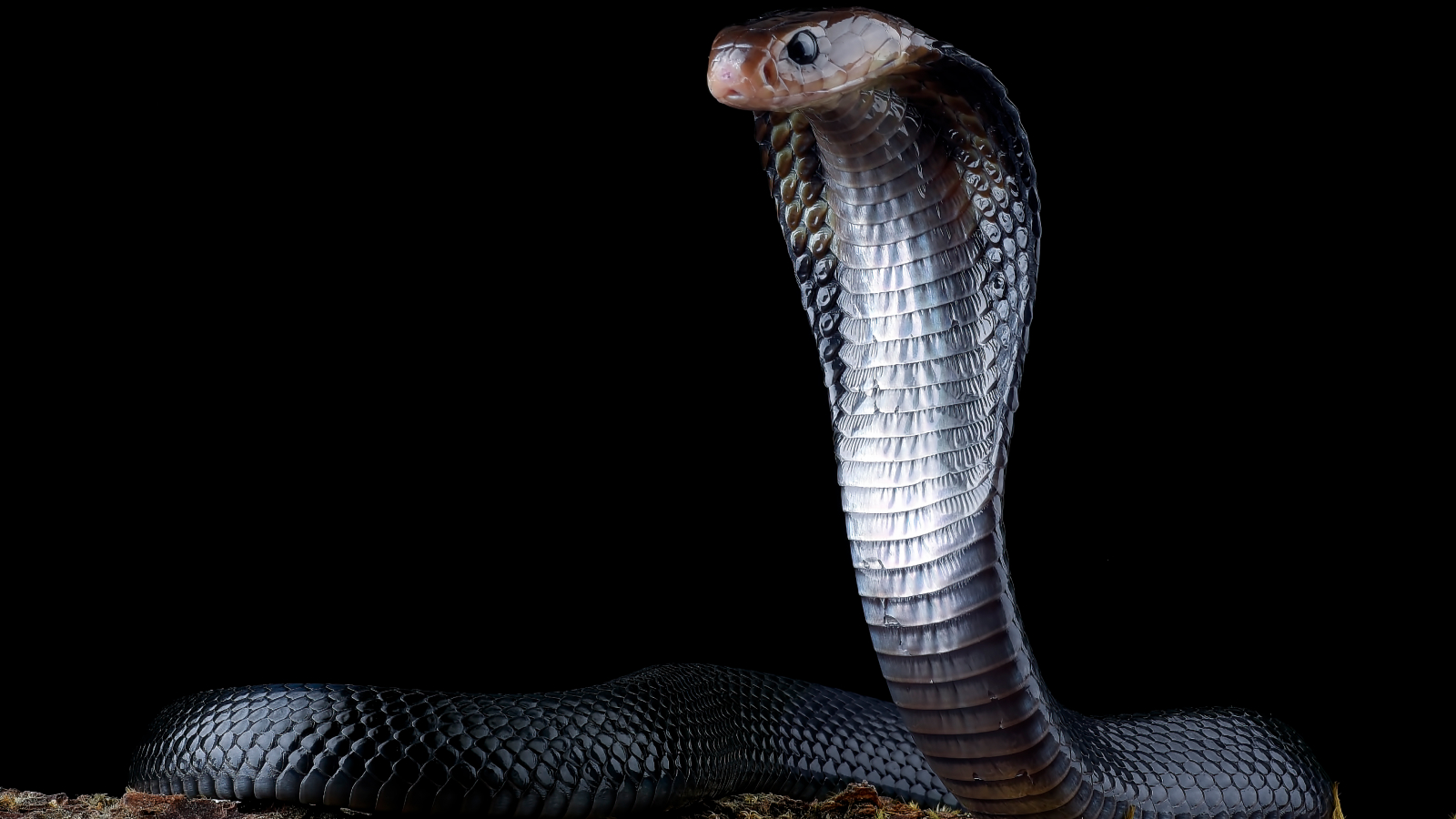
"When the cobra runs for her life, she goes like a whiplash flicked across a horse's neck," Rudyard Kipling wrote of the villainous cobra Nagaina in his story of the heroic mongoose Rikki-Tiki-Tavi. And this whiplash motion may have helped real-life cobras and their relatives spread from Asia, where they originated, to the rest of the world.
Scientists once believed that Elapoidea, the superfamily containing cobras, coral snakes and mambas, originated in Africa. A fossil of a file snake found in Tanzania and dated to the Oligocene Epoch (33.9 million to 23 million years ago) supported this hypothesis — it is the oldest relative of this group discovered in the fossil record.
But in new research, published Aug. 7 in the journal Royal Society Open Science, researchers used genetic analysis and fossils from other regions to conclude that these snakes, as well as snakes in the related superfamily Colubroidea, actually originated in Asia.
"The reason for the uncertainty was mostly because of the lack of understanding of how these different species are related to one another," lead author Jeffrey Weinell, an evolutionary biologist and postdoctoral fellow at the American Museum of Natural History, who conducted the research while at the University of Kansas, told Live Science.
Related: 50-foot 'king of the serpents' may have been the biggest snake to ever live
Scientists had never compiled comprehensive genetic data on the group before, he explained. "I was interested in inferring the tree of life for this group, which predicts the evolutionary relationships, and then using that tree of life estimate plus information about modern species to estimate where the ancestor of this group lived," he added.
In the new study, Weinell and colleagues analyzed 3,128 locations on the genomes of 65 species of Elapoidea to decipher how all the snakes were related. They also included additional data from 434 other species, some of which had already been compiled in genetic databases and some of which they sampled themselves. These species were then mapped to depict their historical geographic distribution.
They found that the earliest ancestors of Elapoidea evolved in Asia between 28.94 and 45.92 million years ago and that Colubroidea emerged some 31.13 to 48.81 million years ago.
These early Asian ancestors may not exist in the fossil record due to the conditions where they evolved. "Tropical Asia is not the best for preserving fossils because of the climate," Weinell said.
These snakes left Asia for Africa, between 37.5 million, at the earliest, and 24.4 years ago and their descendants then dispersed into Europe, Australasia and the Americas in multiple waves. There are now 700 species, on every continent except Antarctica and many islands as well. Even the seas have been colonized by these early snakes' descendants.
The study found these snakes had a convoluted evolutionary history. Elapoids and colubroids likely moved into Africa from Asia on at least 15 different occasions, for example. And they recolonized Asia from Africa at least seven times, indicating the complexity of their movement between landmasses and underscoring the difficulty of tracing their origins.
As to how they got from one continent to the other, Weinell suspects that these snakes may have taken a variety of paths — using land bridges and even crossing narrow marine passages, to achieve their global distribution today.







